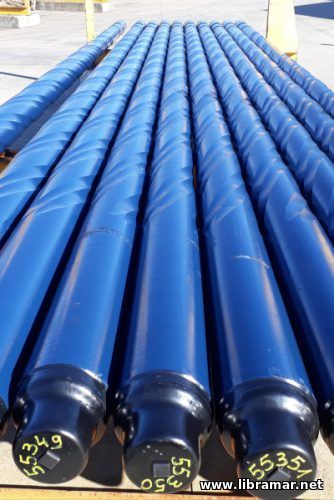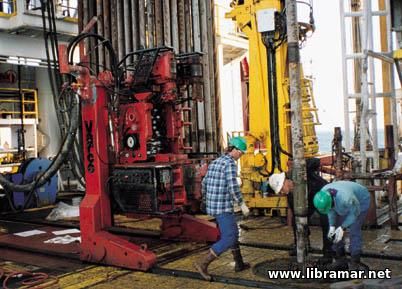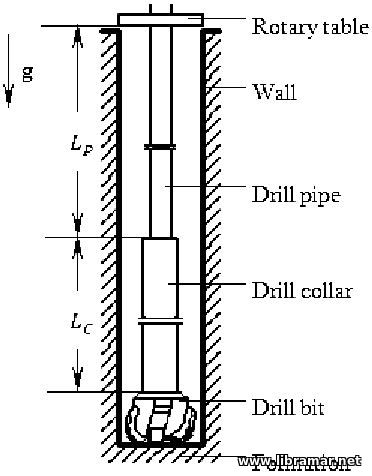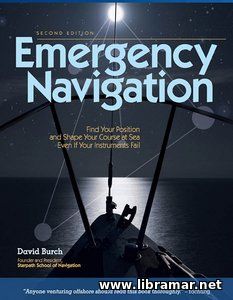Drill Collars and Drill String

In rotary drilling normally employed on the offshore drilling units, a rig crew rotates a bit that, in turn, drills a hole through the earth in search of the hydrocarbons, i.e. oil and gas. The crew attaches the bit to a hollow length of pipe that serves two purposes: it provides the weight to make the bit dig into the earth’s formations, and it provides a passageway to circulate a fluid – drilling fluid – to the bit as it rotates. This drilling mud cools and lubricates the bit and carries the rock cuttings from the bottom of the hole to the surface. Surface equipment removes the cuttings and recirculates the clean mud back down the pipe. As the crew drills deeper into the earth, crew members add more pipe to that which is connected to the bit. Before a well is completed, the drill stem may be thousands of feet long.
Because the drill stem serves two purposes, it consists of, among other things, two basic types of pipe: the drill string and the drill collars. These two types of pipe are similar in that they are hollow lengths joined together to make one long conduit from the  surface to the bottom of the hole. They are constructed somewhat differently, however, because they fulfill different functions.
surface to the bottom of the hole. They are constructed somewhat differently, however, because they fulfill different functions.
Drill Collars
Drill collars are heavy-walled metal tubes, usually made of steel, that the crew positions directly above the bit in order to guide, stabilize, and put weight on it (commonly referred to as WOB – weight on bit) and to make hole. Manufacturers cut threads into each end of a drill collar so that it can be joined with another collar. The end with the threads cut on the inside, the female end, is called the box, and the end with the threads cut on the outside, the male end, is called the pin. The number of drill collars screwed together and placed on top of the bit depends on the weight needed to make hole efficiently, the type of formations to be drilled through, the weight of each drill collar, and other variables. After the crew attached the required number of drill collars to the bit, crew members attach additional pipe to continue the conduit from the top of the drill collars to the surface; they use the drill string for this purpose.
 Drill String
Drill String
Drilling crews use drill string to transmit the rotation of the rotary table or top drive to the bit and to serve as a conduit for the drilling fluid. Though the drill string completes the connection between the drill collars and the surface, the crew does not use it to put weight on the bit. Since the drill string is not used to put WOB (unless drilling horizontally, where it is used in compression to put the bit horizontally through the formation), the pipe body is lighter and much thinner than the drill collars. The metal wall of the drill pipe is usually less than half an inch (12.7 millimeters) thick and too thin for threads to be cut directly into it. Manufacturers, therefore, produce short, thick, heavy piece of pipe called tool joints with threads cut on either the outside or the inside. These thicker-walled joints are welded to each end of the drill pipe so that the crew can join the pipes together.
The term “drill string” refers to the column of drill pipe with attached tool joints. The “drill stem” refers to both the drill string and the drill collars as well as the swivel, Kelly, stabilizers, and various specialty items used for rotary drilling. The drill stem is one of the most expensive, integral pieces of rotary drilling equipment. Consequently, handling it properly and maintaining it in good condition are priorities for any crew.
The "Read Later" function allows you to add material to this block with just one click. Just click on the icon and read the articles that interest you at any convenient time.


